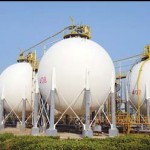West Texas Intermediate crude rose to the highest in a week after the Energy Information Administration reported a seventh consecutive weekly decline in US crude inventories, followed by a drop in distillate fuel supplies. Improving US economy prospects continued to underpin the market. Expectations for an increase in Iranian crude exports and recovering Libyan output however limited the markets upward momentum, and mostly capped Brents advance.
On the New York Mercantile Exchange, WTI crude for delivery in March rose by 1.32% to $94.01 per barrel by 15:49 GMT. Prices surged to a one-week high of $94.12, while days low stood at $92.63 a barrel. The American benchmark added 0.8% on Tuesday and extended its weekly advance to over 1.2% after Wednesdays surge.
Meanwhile on the ICE, Brent futures for settlement in the same month jumped to $106.18 per barrel by 15:49 GMT, up 0.55% on the day. Prices held in a daily range between days high and low of $106.32 and $105.07 a barrel. The European benchmark slid by 0.3% on Tuesday but trimmed its weekly decline to 1.2% on Wednesday.
Oil prices edged higher on Wednesday after the Energy Information Administration reported a long-awaited decline in US distillate fuel inventories and a seventh straight weekly withdrawal in crude supplies. US crude stockpiles fell by 7.66 million barrels to 350.2 million in the seven days through January 10th, sharply exceeding the median estimate of 11 analysts surveyed by Bloomberg for a moderate 1.3 million decline. This brought the decrease since November 22 to 41.2 million barrels, the largest seven-week decline since 1982.
Supplies at Cushing, Oklahoma, the biggest US storage hub and delivery point for NYMEX-traded contracts, rose by 0.2 million barrels to 40.9 million.
Refinery utilization fell to 90.0%, marking a 2.3% retreat from a week earlier. Both gasoline and distillate fuel production decreased last week, averaging 8.3 million and 4.7 million barrels per day.
Motor gasoline inventories rose by 6.18 million barrels to 233.1 million in the seven days to January 10th, exceeding analysts projections for a 2.5 million jump, and were in the middle of the average range for this time of the year. Distillate fuel supplies however fell by 1.02 million to 124 million barrels, defying expectations for a 1.25 million increase, and were below the lower limit of the average range.
Domestic crude production rose by 14 000 barrels per day to 8.16 million bpd, the most since 1988. This led to the fall in US crude imports. Inbound shipments slid to 6.9 million bpd last week, 1.1 million bpd less from a week earlier. The four-week average imports stood at 7.4 million barrels per day, 5.3% below the same period a year earlier.
Iranian exports
The oil market, and especially the Brent benchmark, continued to be under pressure on prospects of future increases in Irans oil exports. An interim deal that was struck in November last year might bring back as much as 1 million bpd of Iranian oil to the global scene as Western nations lift export sanctions in exchange for curbs in the Islamic republics nuclear program.
The preliminary agreement between Iran and the five permanent UN Security Council members and Germany goes into force on January 20th, Iran’s Foreign Ministry and the European Union announced on Sunday. A diplomatic source said on Monday that the counterparts will start talks on finalizing the settlement in February.
Meanwhile, Iranian crude exports may also rise by as much as 500 000 barrels per day, if an oil-for-goods swap deal between the Persian Gulf nation and Russia goes through, an agreement heavily criticized by Western world powers.
Libyan output
Also weighing on prices, production from Libyas recently reopened Sharara oilfield reached 322 000 bpd, nearing its full capacity of 340 000 bpd. The demands of protesters who had previously threatened to shut it again were met, Mohamed El Harari, spokesman for state-run National Oil Corp., said for Bloomberg.
Libyas Prime Minister Ali Zeidan said on Tuesday the government would give intermediaries a chance to end the conflict with protesters blocking the country’s eastern export terminals, seeking a peaceful resolution to the standoff. One of the latest escalations of tension resulted in the death of the country’s deputy industry minister, Hassan al-Drowi, who was killed by gunmen on Saturday.
Carsten Fritsch, an analyst Commerzbank AG in Frankfurt, said in a report, cited by Bloomberg: “A further Brent price slide is probable because the market expects the oil supply to continue growing. With the help of mediators, the government in Libya is, for example, keen to resume oil shipments from the oil terminals in the east of the country.”
Fanning some positive sentiment, Chinas top oil company CNPC (China National Petroleum Corporation) predicted the Asian nations implied oil demand will grow quicker in 2014 as new refineries become operational. Consumption is expected to surge by around 4%, or nearly 440 000 bpd this year, and reach 10.36 million barrels per day.





